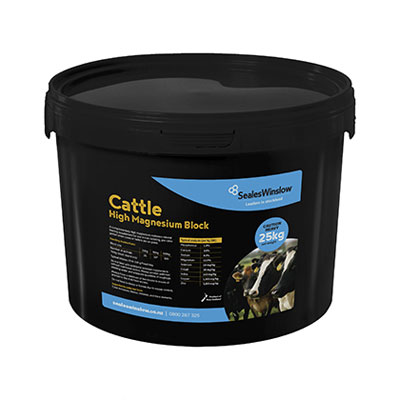Dairy Advice - Winter
Mighty magnesium
When a mineral is pivotal for animal health, it’s good to take a close look at it. Find out what aspects determine the quality of magnesium and the effectiveness of supplementation.
Around calving and early lactation, the supplementation of magnesium is commonplace. After all, it is an important nutritional tool to ward off health issues like milk fever and grass tetany. Both are physical manifestations of mineral imbalances that are effectively treated with magnesium.
While grass tetany is the result of an actual magnesium deficiency, milk fever is caused by insufficient calcium, however, can also be prevented with magnesium. This is due to magnesium’s ability to stimulate the mobilisation of calcium from the body while also promoting the absorption of calcium from the diet.
If magnesium is limited, the animal can’t possibly absorb enough calcium from the diet. There’s a clear need for seasonal and regular supplementation which underlies the fact that the mineral doesn’t store well in the body. Besides, its availability in pasture also fluctuates seasonally as well as regionally.
Magnesium is not created equal
Everyday usage often fails to distinguish between different types of magnesium. There are, in fact, vast differences in quality between various magnesium products. These differences play a big role in determining actual availability and utilisation by the animal.
One of the first factors to consider is the level of impurities because not all forms deliver the same amount of available nutrient. This is reported as a percentage, typically ranging from 10% to 50% which relates to the total amount of available magnesium that is delivered. In other words, 90% to 50% of the product comprises impurities and other substances.
If you need to supply 16g Mg/cow/day (the requirement of a 500kg cow pre calving) and are using a 10% product, you will need 162g/cow/day to achieve the desired level of supplementation. A 50% product, by contrast will require 80g/cow/day to achieve the same.
The implication of a quality product with fewer impurities is that your animals are less likely to be ingesting undesirable substances.
Additional aspects such as particle size (and therefore surface area) can also influence how readily the mineral can be absorbed within the animal.
Delivery methods matter
For magnesium there are several delivery methods – from the conventional dusting, to water trough treatment, bullet application, in feed and molasses lick blocks. Regardless of application, it’s imperative to ensure accuracy of dosage and regularity of delivery which makes some methods more efficient and less wasteful than others. For a dusting application, for instance, you’d calculate 50% wastage, whereas lick blocks represent a targeted and convenient delivery.
There’s also the issue of palatability that comes into play. Animals will avoid higher concentrations of magnesium as it becomes very unpalatable.
It’s clearly important to ensure careful dosage (and mixing). It is highly recommend to adopt a regime with several supplementation ‘touchpoints’. This avoids high concentrations in one source and ultimately enhances the uptake reliability.

Cattle High Magnesium Block
Cattle High Magnesium Block delivers essential micro-nutrients to balance the deficiencies of feeding pasture to cattle during their dry period.

